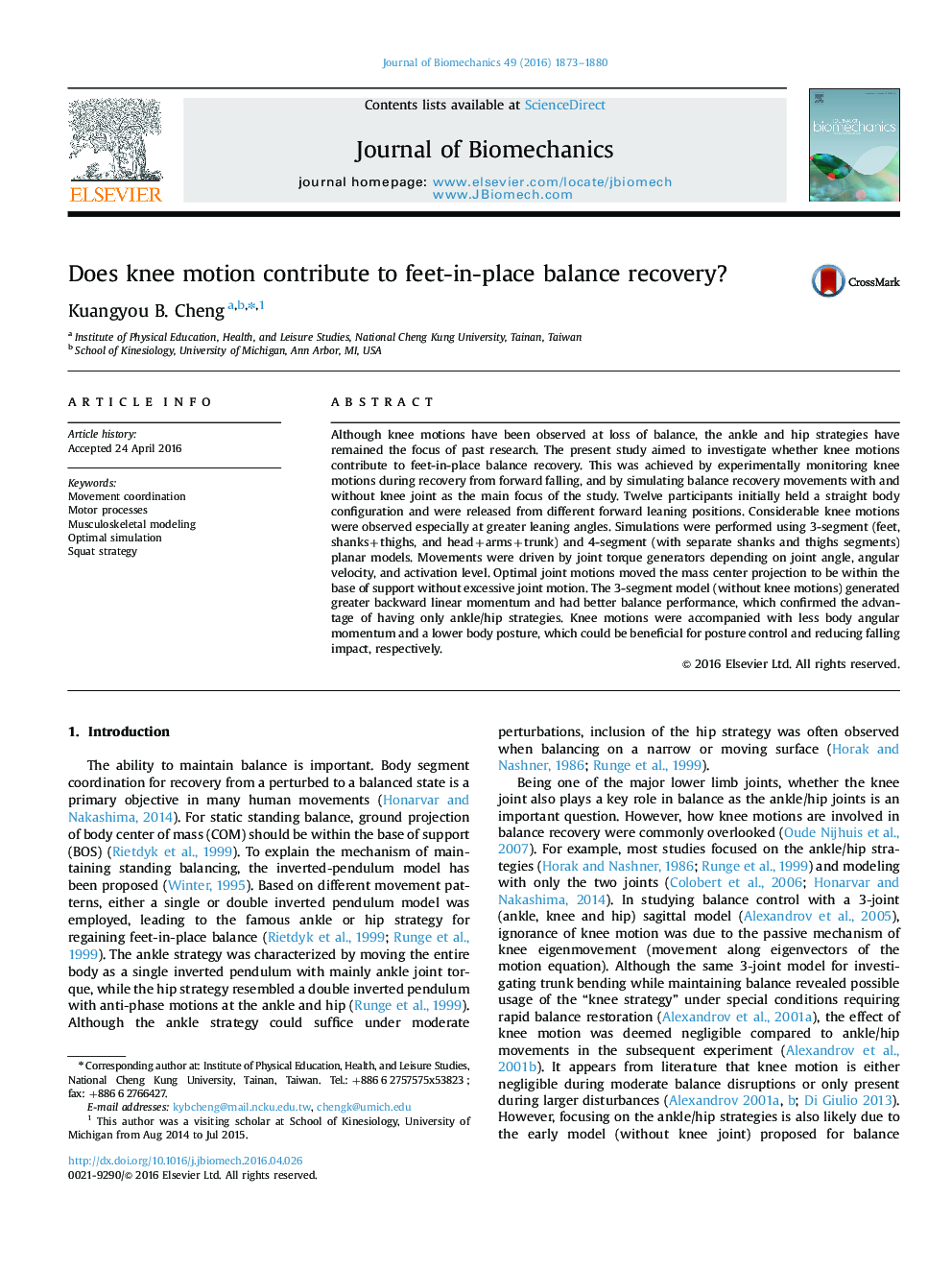| Article ID | Journal | Published Year | Pages | File Type |
|---|---|---|---|---|
| 10431088 | Journal of Biomechanics | 2016 | 8 Pages |
Abstract
Although knee motions have been observed at loss of balance, the ankle and hip strategies have remained the focus of past research. The present study aimed to investigate whether knee motions contribute to feet-in-place balance recovery. This was achieved by experimentally monitoring knee motions during recovery from forward falling, and by simulating balance recovery movements with and without knee joint as the main focus of the study. Twelve participants initially held a straight body configuration and were released from different forward leaning positions. Considerable knee motions were observed especially at greater leaning angles. Simulations were performed using 3-segment (feet, shanks+thighs, and head+arms+trunk) and 4-segment (with separate shanks and thighs segments) planar models. Movements were driven by joint torque generators depending on joint angle, angular velocity, and activation level. Optimal joint motions moved the mass center projection to be within the base of support without excessive joint motion. The 3-segment model (without knee motions) generated greater backward linear momentum and had better balance performance, which confirmed the advantage of having only ankle/hip strategies. Knee motions were accompanied with less body angular momentum and a lower body posture, which could be beneficial for posture control and reducing falling impact, respectively.
Related Topics
Physical Sciences and Engineering
Engineering
Biomedical Engineering
Authors
Kuangyou B. Cheng,
